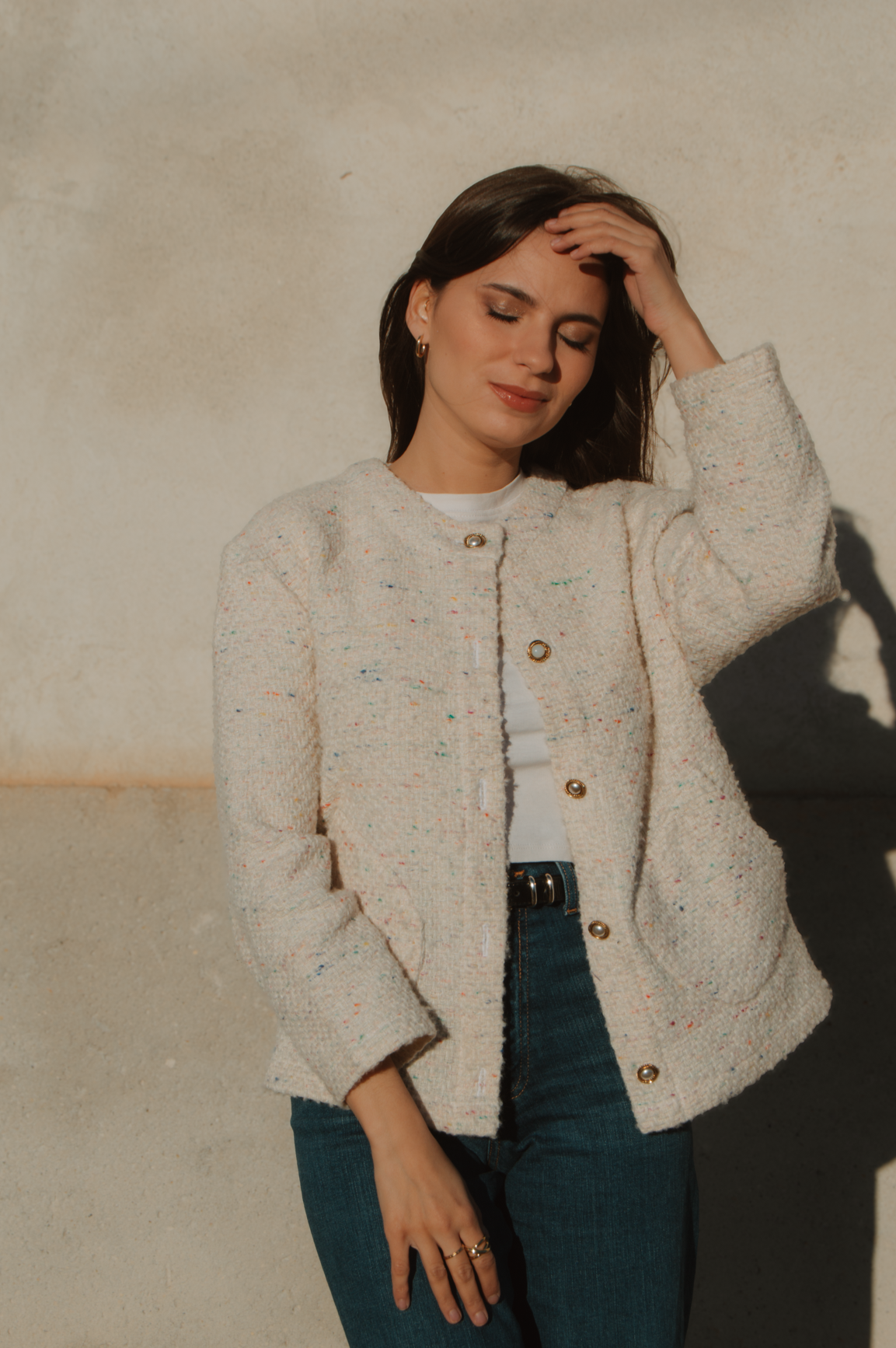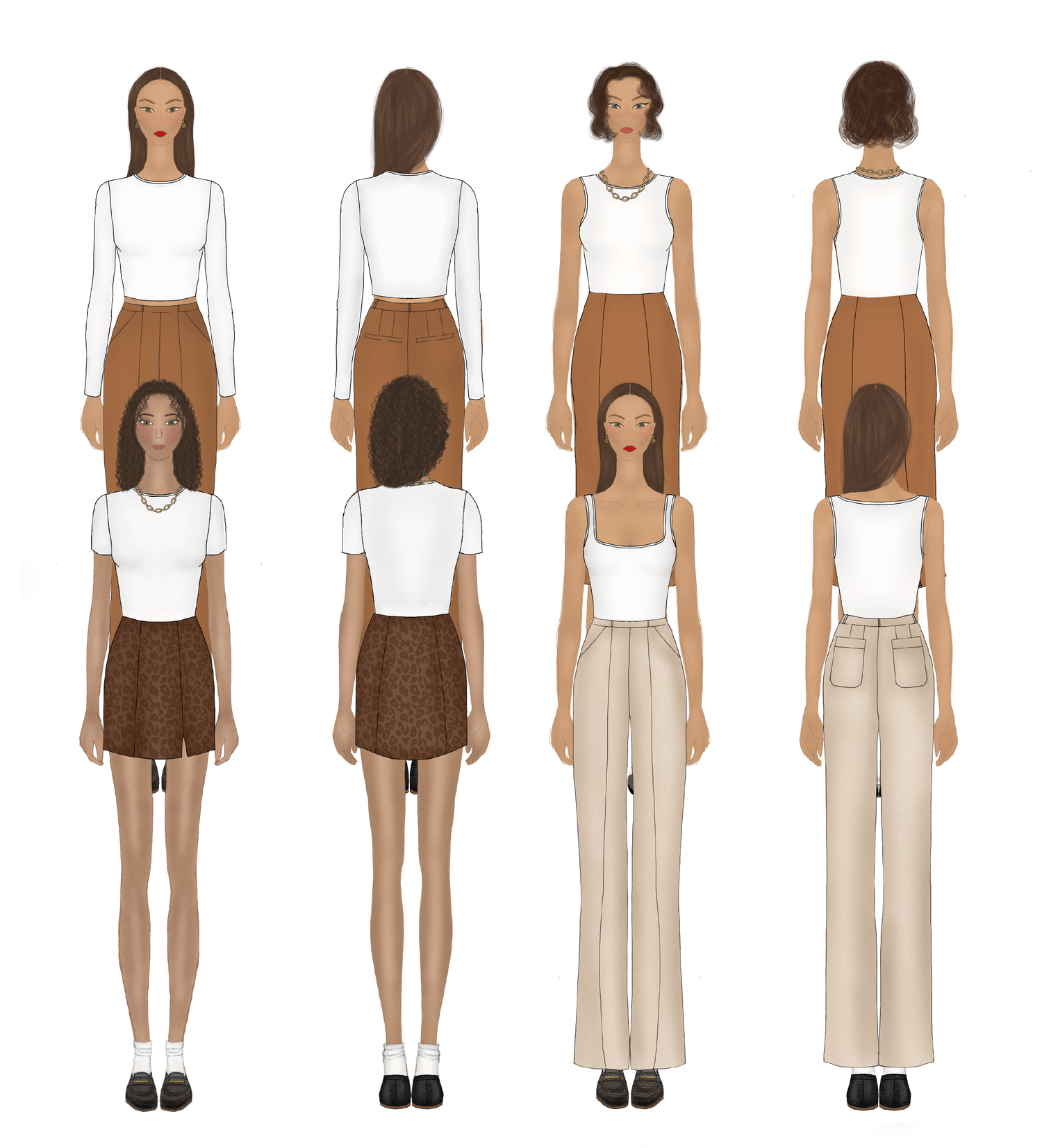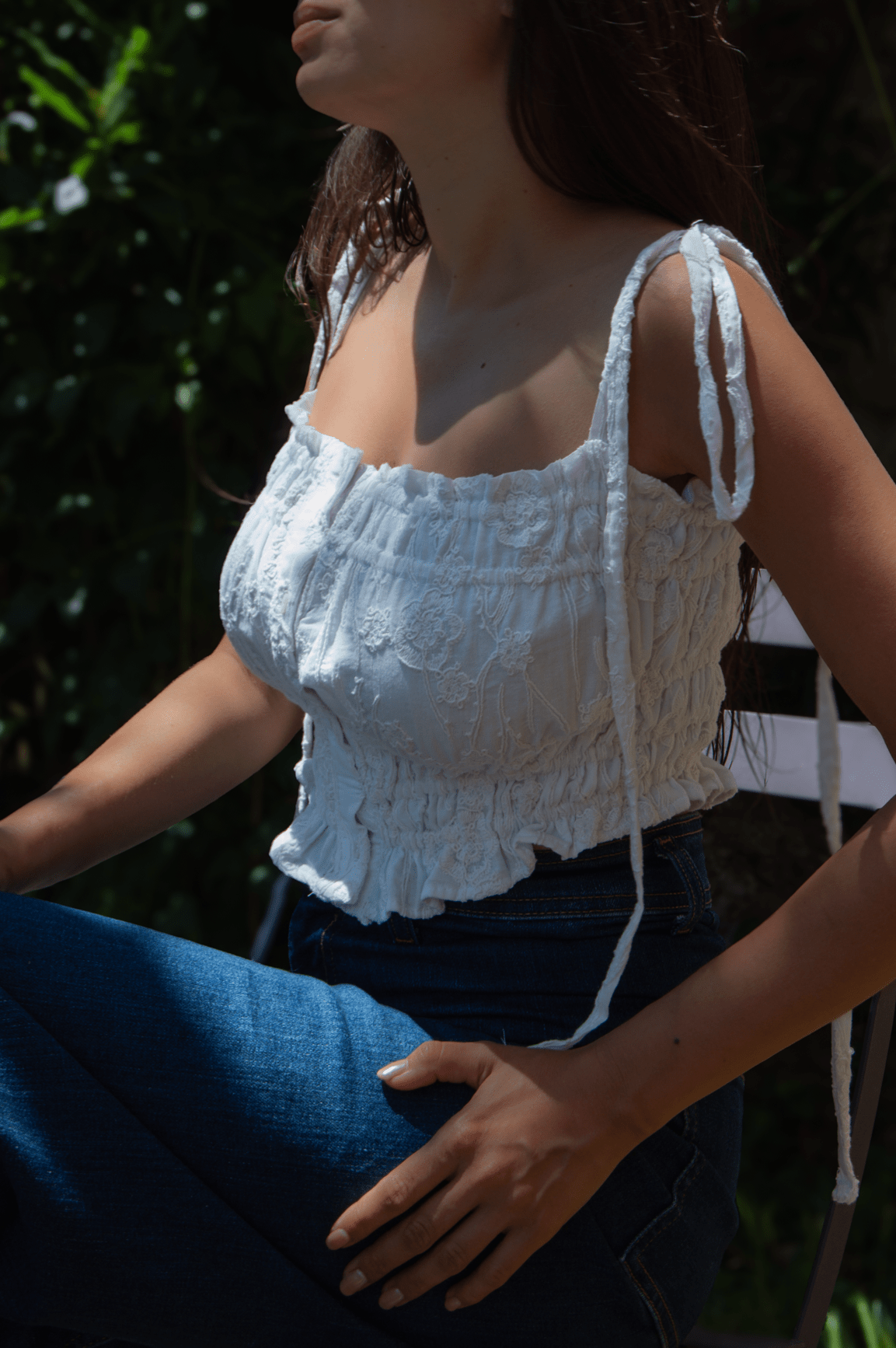The size and fit guide
When you start sewing, choosing your size can become a real headache. How do I choose my size from the measurement chart? What should I do if I am between several sizes? How do I take my measurements correctly? The size in the measurement chart does not match what I usually buy in stores, what should I do? How do I read the finished measurement chart? How do I reduce or lengthen the length of a garment? Through this article, I will help you understand how to use the measurement chart to choose the most suitable size and help you make a custom-made garment if you are between several sizes.
Table of measurements in inches
All our models are designed for a height of 168 cm (66.14 inches) .
How do I take my measurements?
Using a tape measure, take the following measurements:
- Your bust measurement: Place your tape measure at the fullest part of your bust, passing through the tips of your breasts. Make sure it is straight across your back.
- Your waist measurement: Place your tape measure at the hollowest point, parallel to the ground, taking care not to tighten the tape.
- Your hip measurement: Place your tape measure around the fullest part of your hips.
Compare the measurements obtained in the size chart above and choose your size by selecting the number greater than or equal to your measurement.
I'm between sizes, what should I do?
It is relatively rare that your bust, waist and hip measurements correspond to a single size. If this is your case, don't panic. We will see together how to proceed according to the sewn model.
First, you should know that each instruction booklet that accompanies our sewing patterns has a chapter dedicated to adjustments. This chapter presents the steps to follow in order to make the necessary modifications to create a perfectly tailored garment.
Example of the diagram: Waist size 38 and hip size 40. (extract from the instruction booklet for the Agathe skirt-shorts )
+ small video on thumbnail
You should know that depending on the model sewn, it is not always necessary to make adjustments. For example, if the garment is fitted at the chest and then flares out, you simply need to choose the size that corresponds to your chest size. This is where the finished measurements table is useful: it allows you to see the final size of the garment in order to better choose your size.
How do I change the length of my garment?
All our models are designed for a height of 168 cm (66.14 inches) . If you want to change the length of your garment so that it fits your body perfectly, you will need to add or remove the desired height at the adjustment lines of the different pieces.
Excerpt from the Céline shirt instruction booklet.
Be careful not to remove centimeters from the width so as not to undersize the model and remember to retrace the various marks that could have been moved (buttons and buttonholes for example) .
+ small video on thumbnail
If you are making a significant length alteration, we recommend creating a toile (a prototype in an inexpensive fabric) to check that the proportions are right for you before cutting into your final fabric.
If you are unsure about the ideal length, always start by sewing a garment that is longer than necessary . You can easily adjust by cutting off the excess or modifying the hem in the final steps.
How does the finite measures table work?
In some sewing patterns, you can find what is called the finished garment measurement chart. This corresponds to the final measurements of the garment once you have finished sewing it. It is calculated by adding the initial measurement chart to the ease available in the garment.
This table gives you an idea of the ease available in the garment to help you choose which size you should sew. Ease is essential in order to feel comfortable in your garment and to be able to close it. It is necessary to have a minimum of 4 cm of ease at the chest and hips and 2 cm at the waist (on a fitted garment such as pants or a close-fitting dress).
Some finished measurement tables have values that are much higher than the initial measurement table. This is the case for garments with an oversized cut or where part of the garment is flared (for example, a dress fitted at the waist but with a gathered skirt).
In other cases, the finished garment measurements are smaller than the initial measurement table. This happens on tight-fitting garments sewn in a stretch fabric. The stretch of the fabric allows to obtain a tight-fitting and comfortable garment in which ease is not necessary.
The size in the size guide does not match what I usually buy in stores.
You should know that each brand has its own size chart. In the same way that we often find large differences between the size guides of different countries (for example, Germans are known to be larger than the French).
In the interest of inclusivity, our size range is available from 32 to 50. Unfortunately, we do not offer sizes above 50 because this requires specific adjustments for which we do not have the expertise.
Our size chart corresponds to a fashion house size guide. It is based on the measurements that are generally found on a woman with a height of 168 cm. It is possible that you need to sew a size 42 while you are used to buying clothes in size 40 in stores. This is a remark that we have received several times. Our wish was not to modify this size chart since it is used by the majority of independent sewing pattern brands. It therefore ensures uniformity on the market. In addition, the bases with which we work depend on this size guide. It is therefore natural for us not to modify it in order to avoid errors.
So don't worry, and know that it's just a number!








